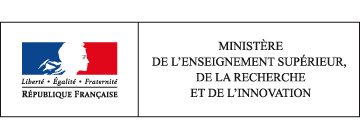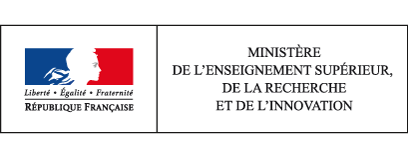26 research and development efforts in France
This page has been updated. Read 26. Research and experimental development efforts in France in Higher education & research in France, facts and figures 10th edition - June 2017
France’s gross domestic expenditure on research and development has doubled since 1982 and accounted for 2.23% of GDP (€46.5 billion) in 2012. Businesses alone implemented 65% of R&D expenditure and funded 59% of gross national expenditure on R&D.
In 2012, research and experimental development (R&D) carried out within France accounted for €46.5 billion in expenditure, 2.23% of the country’s national wealth (gross domestic product or GDP). Once adjusted to take account of price changes, gross domestic expenditure on R&D (GERD) increased by 1.9% between 2011 and 2012. Businesses accounted for 65% of France’s GERD (table 26.01). In 2013, GERD should increase only slightly (+ 0.5% in real terms) due to stagnating government expenditure and a slowdown in spending by businesses. Total GERD is therefore expected to reach €47.2 billion (2.23% of GDP).
In 2012, funding of R&D by French businesses and government (gross national expenditure on R&D or GNERD) totalled €48.4 billion, equivalent to 2.32% of France’s national wealth (GDP). Businesses remained the primary source of funding for R&D in 2012, accounting for 59% of GNERD.
Between 1981 and 1993, R&D expenditure in France increased at a faster rate (4.0% a year on average in real terms) than GDP (2.1%). This trend subsequently reversed, with GERD rising by 1.4% a year on average between 1993 and 2008, while GDP continued to increase by 2.1%. In 2011, GDP returned to its 2008 level following a fall in 2009 (chart 26.02). Over the last 3 years between 2009 and 2012, R&D expenditure has increased by one percentage point more (on average 2.6% a year in real terms) than GDP (1.5%). While government R&D expenditure increased at a rate slightly lower than that of GDP (1.3%), business enterprise R&D expenditure rose by 3.3%.
Over the past ten years (2002-2012), the average annual increase in intramural business enterprise expenditure on R&D (BERD) (1.6%) in real terms was greater than intramural government expenditure on R&D (GOVERD) (1.0%). The gap between businesses and government was even more marked when it came to the increase in GNERD, with business expenditure rising by 2.6% a year on average between 2002 and 2012, as compared with 0.7% for government expenditure. Since 1995, the contribution made by businesses to R&D funding has been greater than that of government (chart 26.03).
The difference between France’s total GERD and total GNERD represents the balance of R&D trade between France and other countries, including international organisations (table 26.01). In 2012, funding received from abroad and from international organisations (€3.5 billion) accounted for 7.6% of GERD financing. This was less than that spent by the French government and French businesses abroad (€5.4 billion). The government’s balance of trade with other countries was largely negative (€1.5 billion), whereas that for businesses was only €0.4 billion. The key international stakeholders, excluding major industrial groups such as Airbus Group, were the European Space Agency (ESA), the European Union (EU) and the European Organisation for Nuclear Research (CERN).
With 2.23% of GDP dedicated to intramural research in 2012, France did not meet the 3% target set by the EU as part of the Europe 2020 strategy or its own target. It ranked 5th among the OECD’s six largest countries in terms of GERD (chart 26.04), behind South Korea (4.4%), Japan (3.4%), Germany (3.0%) and the United States (2.8%), but ahead of the United Kingdom (1.7%). Within the EU, it was the countries with medium-sized economies that devoted the largest proportion of their GDP to R&D: Finland (3.6%) and Sweden (3.4%).
Insee
OECD.
How to cite this paper :
close
Key figures
Whole of France
Whole of France
Whole of France
Whole of France
Whole of France
Whole of France
Whole of France
26.01 Funding and performance of R&D in France
1 GDP in June 2014, change of methodology and 2010 as base year.
2 State and not-for-profit institutions (government, higher education and private non-profit sector).
3 2009 figures recalculated to make them comparable with 2010.
4 Change of methodology.
5 Final results.
6 Semi-finalised results.
7 Estimates.
You can embed this table to your website or your blog by copying the HTML code and pasting it into the source code of your website / blog:
close
26.02 Changes (1981-2013) in gross domestic expenditure on R&D and in the GERD/GDP ratio 1
1 GDP base year = 2010.
Insee
You can embed this chart to your website or your blog by copying the HTML code and pasting it into the source code of your website / blog:
close
26.03 Changes (1981-2013) in business enterprise and government GERD and GNERD (in €M at 2010 prices)
Break in series in 1999.
r Change of methodology, revised data.
You can embed this chart to your website or your blog by copying the HTML code and pasting it into the source code of your website / blog:
close
26.04 Gross domestic expenditure on R&D as a percentage of GDP 1 (2012)
1 The European System of Accounts (ESA 2008) now recommends that funds spent by economic agents on R&D should be counted as investments, whereas they were previously categorised as intermediate consumption. As a result, countries that adopted this standard have had to significantly revise their level of GDP upwards for the entire period. In this graph, only data for the United States and France have been revised.
2 Estimate.
3 GDP revised in 2014, base year = 2010.
4 Excluding (all or part of) capital expenditure.
You can embed this chart to your website or your blog by copying the HTML code and pasting it into the source code of your website / blog:
close
Related statistical publications
 Note flash SIES 01 - Intramural business enterprise R&D expenditure up 1.9% in 2013 - Florian Lezec, Anna Testas - March 2015
Note flash SIES 01 - Intramural business enterprise R&D expenditure up 1.9% in 2013 - Florian Lezec, Anna Testas - March 2015 

 Note d'information SIES 14.07 - Research and development expenditure in France in 2012 - Christophe Dixte, Anna Testas - August 2014
Note d'information SIES 14.07 - Research and development expenditure in France in 2012 - Christophe Dixte, Anna Testas - August 2014 The rise in GERD was the result of a steady increase in business R&D expenditure, with government expenditure remaining stable. The country's research effort, measured as a ratio of GERD to gross domestic product (GDP), was 2.23% in 2012. It is likely to remain stable at 2.23% in 2013.
Due to a slowdown in business R&D expenditure, GERD is in fact likely to increase by 0.5% in volume in 2013 (provisional results), a rate that is only slightly higher than that of GDP.
In 2012, R&D activities in business enterprises and in government mobilised 412,000 full-time equivalent staff.
Translation
 Etat de l'enseignement supérieur et de la rechercheL'état de l'Enseignement supérieur et de la Recherche en France n°8 - juin 2015
Etat de l'enseignement supérieur et de la rechercheL'état de l'Enseignement supérieur et de la Recherche en France n°8 - juin 201526 - l’effort de recherche et développement en France - Catherine David






